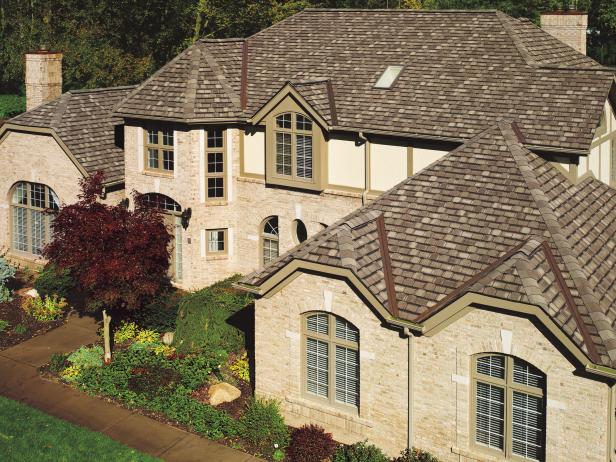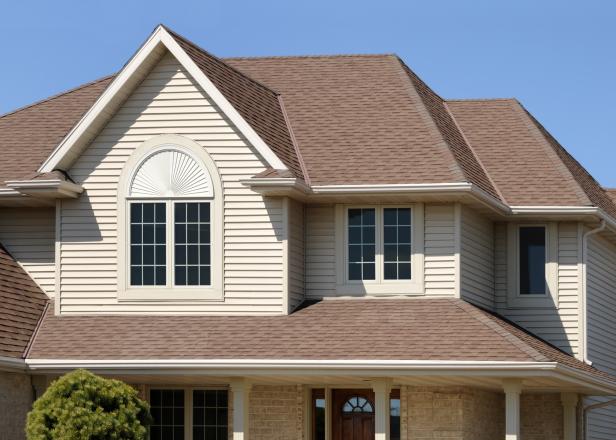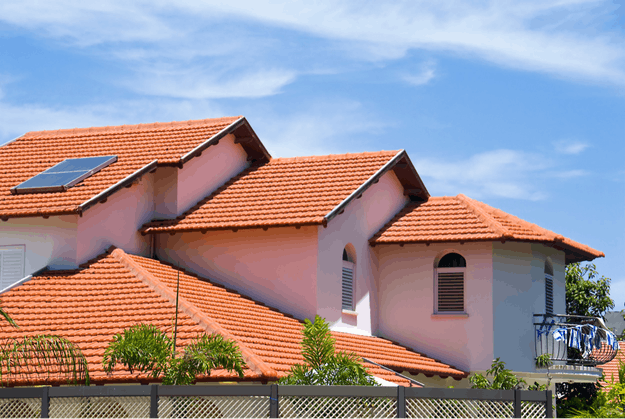Things You Need to Know Before Installing a New Roof
Replacing a roof is a costly and time-consuming project that all homeowners must undertake every few decades. Given the investment in time and money — and the essential role a roof plays in protecting your house — you want to ensure the job is done right, whether by you or professional roofers. By reading our guide below, you’ll learn when your roof needs a replacement and how to prepare for a roof installation.
Several situations call for an immediate roof replacement, and some of the signs are more obvious than others:
Your Roof Is Old: The lifespan of a roof is believed to be 20 to 25 years, so you should replace it once it reaches this age.
Your Shingles Are Buckling and Curling: Inspect the slopes of your roof that receive direct sunlight. If you see that shingles are losing granules and curling, they may need to be replaced.
Your Roof Valleys Are Showing Neglect: If shingles in your roof valleys are missing or breaking apart, it’s time to get a new roof. These valleys are one of the most critical parts of a roof, as rainwater flows through them on its way to the gutters. If this area is damaged, it becomes vulnerable to leaks.
Your Chimney Flashing Needs to Be Replaced: If your flashing is made of tar or cement, it may be a good idea to replace it with a metal flashing system, which is water-tight and lasts longer.
Your Gutters Are Full of Shingle Granules: As roofs near the end of their lives, they start to lose more granules, which often end up in the gutters. Check your gutters to see if they are full of these granules. Another sign of granules wearing away is a darker or inconsistent color on certain areas of the roof.
You See Daylight Through the Boards of the Roof: Go up to your attic to check whether daylight is coming through the roof.
Your Roof Is Sagging: A sagging roof is a serious problem that requires immediate action and usually indicates a structural issue. The issue may be with the attic decking or perhaps even the foundation supports. While you are not necessarily in immediate danger, this issue is much easier to deal with when it is in a small area — not when it has spread all over the roof.
SELECT THE RIGHT MATERIAL
One of the most important decisions is your roofing material. When deciding on a material, consider the appearance, price and lifespan of each available product. For instance, although asphalt roofing shingles are among the most economical options, their lifespan is one of the shortest for residential roofs. Concrete or metal shingles, on the other hand, tend to last longer and are usually a better choice if you’re interested in making a long-term investment.
CHOOSE BETWEEN PEELING OFF OR LAYERING ON
Another critical decision to make is whether you will remove the existing shingles before installing the new ones or just layer it on. To comply with building code, you are not allowed to have more than two shingle layers on your roof.
EXAMINE THE STATE OF YOUR ROOF FRAME
Whether you’ve had problems with leaking in the past or not, it is highly recommended that you inspect the plywood that is supporting your roof. If you notice any areas where the sheathing is soft or broken — or if it appears to be disintegrating — you should replace it right away. It is also recommended to remove your existing layer of roofing and examine it before you begin the installation. If you can spot and fix a leak in the roof frame itself, it may prolong the life of your roof and help you avoid a more severe leak down the road.

RESIDENTIAL ROOFING
The roof selected for your home is a vital decision impacting you for many years to come. Although many homeowners neglect to put much thought into the roof on their home, it shouldn’t be like this. The roof is among the most essential pieces of the home, providing superior comfort and protection from many weather elements. But, the roof on the house serves a purpose more than protecting it, although that is its primary job. The roof also serves as a statement and enhances the look and appeal of your home
ROOFING COMPANY: A TOP NAME
specialize in roofing sales, installation, repairs, maintenance and inspection, and more, and we do so using only highly-trained experts who want to satisfy your needs far by one expectation. You don’t become one of most trusted names by providing lackluster service, and that’s never something that we do. When you believe Alabama Roofing Professionals, we’ll always go the extra mile to cater to your residential roofing needs
WHAT’S THE COST OF A NEW RESIDENTIAL ROOF
There isn’t a cool Name Your Own Price tool for a new residential roof, but you can feel confident that Alabama Roofing Professionals has a roof in your price range. The purchase of a roof is a significant investment, and we take pride in keeping the costs to a minimal. We ‘d love to discuss with you the various roofs available for your residential location to give you a better idea of the anticipated costs of purchase. Once you’ve decided on a roof, we’ll provide a personalized estimate, so you know exactly what it will cost for the addition to your home.
Many factors influence the cost of your new roof, and while it might be money that you ‘d rather not spend, delaying re-roofing is going only to prolong problems and cost you more money when all is said and done. A few of the factors that influence the cost of your new roof include:
Roofing material selected
Size of the roof
Flashing/ Coatings selected
The company chosen for the installation
Warranties/Guarantees.
Style/design.
NEW RESIDENTIAL ROOF INSTALLATION.
Once you’ve selected your new roof, we’ll provide a professional installation of that roof. Our high-quality roofing experts don’t cut corners to get the job done. Instead, they put in the time to do the job right, ensuring a roof that you are happy to own, and that provides you the long-lasting ability that you want and deserve with a purchase like a new roof. We work promptly to get the job done, and we do it right

Roofing Materials
From wood shake to asphalt shingles, roofing material is an important consideration that contributes to the overall look and style of your home
Updating your existing roof allows you to add value to your home and communicate your home’s look and feel. While roof framing, preparation and proper installation are always important, the material you choose for your roof can bring the exterior of your home to the next level.
When choosing roofing materials, consider the following questions.
How heavy is this material and will it require special framing?
Is the material available in a variety of colors and styles that complement your home?
Does the material meet the fire codes in your local area?
Are there special installation and maintenance issues to consider?
Does this material offer good performance in extreme weather conditions that are common in your area?
What is the cost, life span and warranty for this product?
The answers to those questions will help you determine the best choice for your home. There are lots of options for roofing materials available and here is a rundown of some of the most popular ones.
Asphalt Shingles
The most common residential roofing material used in the United States, asphalt shingles are popular because they are economical and easy to install. These shingles can be reinforced with fiberglass or organic materials (cellulose) without changing the appearance of the shingle.

Commercial Roofing vs. Residential Roofing
One of the useful things a property owner must know in order to keep track of the budgeting requirements for the maintenance and repair of his property is to identify the difference between commercial and residential roofs. Although both types of roofing basically serve the same purpose which is to provide shelter to the building, there are key differences to note.
Materials
The type of materials used for commercial and residential roofing can be varied. This is mainly because of the difference in the structure between the two. Commercial buildings are usually taller than residential buildings. Due to this, commercial buildings require more protection against weather thus, tougher types of materials.
Design
Residential roofs are more visible than commercial roofs thus, the style and design of residential buildings are highly important. Commercial roofs are usually flat, low-sloped, and larger compared to residential roofs.
Cost
In general, it is more expensive to roof a commercial building than a residential building. One factor is that the commercial roofs are way larger than that of a residential roof. Also, the tools and materials used in roofing a commercial building can be costly.
Installation
Residential roofing is easier to install. Unlike residential roofing, commercial roofs require skilled roofing services because commercial buildings have smoke stacks, ventilation systems and pipes making it complicated to install
Best Roofing Materials for Hot Climates
Modernize is an online service that connects homeowners with trusted pros specializing in exterior home improvement projects including solar, roofing, windows and HVAC solutions.
But roofs do a lot more than keep the sun off your back. A poorly made roof degrades in the heat, cracking and breaking down over time. It also transfers heat from the sun directly through the surface and into the home. That process, in turn, drives up energy costs from home cooling, making certain materials a lot less energy-efficient than others.
On the flip side, certain roof types not only stand up to the brutal heat with aplomb, but also provide much-needed ventilation and airflow between the roofing material and the decking, meaning that homes stay cooler than they would with asphalt shingles. Some materials make thermal transfer much more difficult or reflect sunlight off the roof, keeping homes cool as a cucumber. Different hot-weather materials all have their pros and their cons, of course. To help you weigh the different aspects, we present to you a guide of the most popular hot-climate roofing materials.
Terra-Cotta Tiles and Ceramic Roofs
The curved shape of the tiles makes a difference, as well, allowing air to circulate below the surface, which keeps roofs and interiors cooler. The only drawbacks for this stylish energy-efficient choice are the weight of the tiles and the material costs. Clay tiles weigh somewhere between two to four times as much as conventional asphalt roofs, so many homeowners find they need their roofs reinforced before they can install terra-cotta on their homes. Furthermore, they’re also one of the most expensive materials because they run around $700 to $1,000 per square (that’s 100 square feet if you’re not up on your roofing lingo). Still, considering their long lifespan, they may just make back your initial investment.
Concrete Tiles and Slab Roofs
Concrete makes a great option for those who like the thermal properties of terra-cotta but not the price. The thickness of this material means it takes longer to heat in the sun — and hence longer to absorb that heat back into your home. Slab concrete is a cheap — although heavy — solution for hot-weather roofs.